Mark Sisson's Blog, page 297
June 10, 2014
Introducing the First Primal/Paleo Book for Teenagers! (plus a Limited-Time Special Offer)
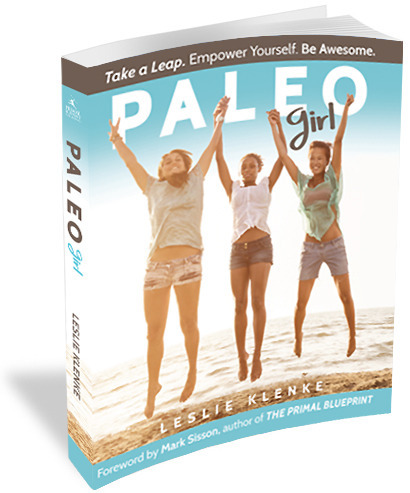 I couldn’t be more pleased to announce Primal Blueprint Publishing’s newest release, the highly anticipated Paleo Girl by Leslie Klenke. This groundbreaking book targets an often overlooked demographic when it comes to the world of health and wellness—teenagers! Primal/paleo lifestyle books target adults and thereby miss a potential connection with the teen reader. Paleo Girl is written in a hip, conversational style that reveals Leslie’s deep empathy and understanding for the teen years. After all, she only recently left that stage herself.
I couldn’t be more pleased to announce Primal Blueprint Publishing’s newest release, the highly anticipated Paleo Girl by Leslie Klenke. This groundbreaking book targets an often overlooked demographic when it comes to the world of health and wellness—teenagers! Primal/paleo lifestyle books target adults and thereby miss a potential connection with the teen reader. Paleo Girl is written in a hip, conversational style that reveals Leslie’s deep empathy and understanding for the teen years. After all, she only recently left that stage herself.
This book is a must have for any Primal book collection, and an excellent gift idea for any teen in your life. Consider it a great summer read to get your daughter, granddaughter, niece, cousin, or friend on track for an excellent school year in August. And when you order a copy today you’ll get a bunch of free bonus gifts. But more on that in a moment…
I met Leslie just over a year ago at PrimalCon Oxnard when she volunteered to help prepare for the event with her close friend and our Community Outreach Manager Elizabeth Mostaedi. (Which come to think of it, it’s a neat coincidence considering Leslie will be presenting at this year’s Oxnard event!) In our first casual interaction, I came to discover her amazing array of writing, designing and marketing talents, and her passion for Primal living. She let it slip that she had a dream of writing/illustrating a children’s book and one day a manuscript for teens to promote health and empowerment in the spirit of the Primal Blueprint principles. I offered her some words of encouragement and we each went about our day.
 Not too long after PrimalCon, Leslie emailed me a fun pitch for a children’s book. I could sense a lot of magic in her story, and asked her to meet me at our offices in Malibu to further discuss the project. From there, the conversation shifted, and our focus turned to her concept for Paleo Girl (or The Primal Teen, as the book was initially referred to). I knew she was onto something special, and the passion she had for this project when she spoke of it was undeniable. The following day, Leslie sent me a new pitch, and that’s the day Paleo Girl was born.
Not too long after PrimalCon, Leslie emailed me a fun pitch for a children’s book. I could sense a lot of magic in her story, and asked her to meet me at our offices in Malibu to further discuss the project. From there, the conversation shifted, and our focus turned to her concept for Paleo Girl (or The Primal Teen, as the book was initially referred to). I knew she was onto something special, and the passion she had for this project when she spoke of it was undeniable. The following day, Leslie sent me a new pitch, and that’s the day Paleo Girl was born.
Fast-forward a year later, and I’ve got this outstandingly written, beautifully designed, information dense book in my hands. I never once doubted Leslie’s conviction for this endeavor and am thrilled to share it with you all today. As no surprise to me, Paleo Girl is already seeing rave reviews from VIPs that received early release copies.
Not only is Paleo Girl speaking to the teen audience it was intended for—it’s also quickly becoming a huge hit with parents. Countless friends and colleagues have said that Paleo Girl is an excellent parenting tool, and I couldn’t agree more. While mothers can likely remember what it was like to be a teenaged girl, this is an experience fathers clearly lack. One father in particular told me that he had been having a hard time relating to his budding teen daughter, but that this book has served as a bit of an insider’s view into his daughter’s life. How powerful is that?
Here’s what you can expect to learn from Paleo Girl:
How a Primal lifestyle can make puberty a simple transition.
Teen puberty must-haves.
How to adapt to a paleo lifestyle in the face of obstacles: a family that doesn’t support your decision, financial obligations, opposing ethnic or religious backgrounds.
How to deal with the tough issues: bullies, peer pressure, self-esteem, and eating disorders.
Teen success stories from girls just like you.
Leslie’s personal success story.
How to motivate yourself and those around you.
What it means to consume a Primal Blueprint/paleo diet.
Why fats, carbs, and protein matter.
The lowdown on omegas.
What organic is and a breakdown of non-conventional food categories.
An approach to Primal fitness: move everyday, lift heavy things, and sprint once in a while.
A step-by-step guide to stretching and fitness essentials.
Why high heels are bad for you.
The importance that sun, sleep, and play have in your life.
Journal pages to track your very own progress.
Delicious teen-friendly Primal recipes and healthy DIY beauty products.
Read an excerpt of Paleo Girl
Speaking of recipes, Leslie convinced me (okay, it didn’t take that much convincing) to try one of her favorite recipes from the book called “Better Than Oatmeal,” and I’ve got to say—I could have gone back for seconds! It was simple to make and perfect for teens that might be new to the kitchen. She wanted me to share it with all of you today.
Better Than Oatmeal
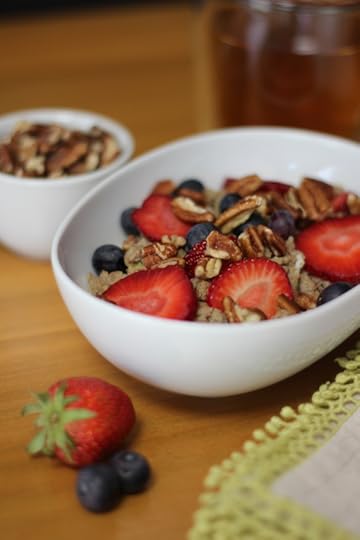
Makes: 1 bowl – Time: 5 minutes
Ingredients:
1 ripe banana
2 eggs
A pinch of cinnamon
A splash of vanilla
Butter (for cooking and topping)
1-2 tbsp crushed pecans
Optional: fruit, heavy cream, additional pecans
Instructions:
Add banana, eggs, cinnamon, vanilla, and pecans to a medium bowl and mash together; the batter will be a little lumpy.
Grease skillet with butter and turn on stove to medium heat.
Add the entire mixture to the skillet.
As the mixture cooks, continue to stir and mash.
Once fully cooked, remove from heat and place in a bowl.
Top with butter or optional ingredients.
But wait! There’s more!
Paleo Girl Special Bonus Offer
As usual, I want to do something special for devoted Mark’s Daily Apple readers on this book release day. I’m offering some fantastic free gifts for this urgent promotion that expires on Friday, June 13, 2014, 11:59 pm PDT.
Buy a copy of Paleo Girl from ANY retail location (PrimalBlueprint.com, Amazon.com, BarnesandNoble.com, etc.) and in any format (physical book, Kindle) and get:
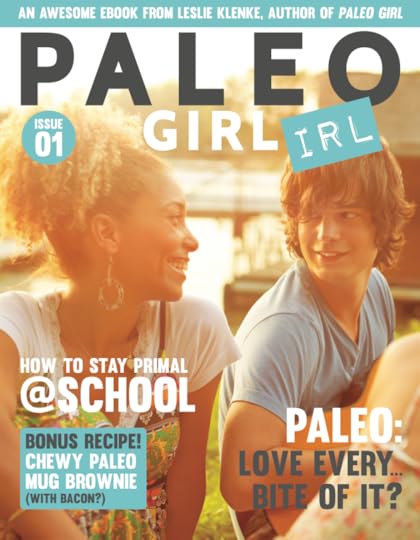 1. Free eBook: Paleo Girl IRL
1. Free eBook: Paleo Girl IRLPaleo Girl IRL—AKA Paleo Girl “In Real Life” is an all access guide into the real life of teen girls who would seriously make Grokette proud! Leslie Klenke, author of Paleo Girl, offers up this new monthly eBook as free supplemental information for girls who crave more tips, tricks, news, advice, and chitchat within the paleo community. In the eBook’s debut Issue 01, Leslie introduces you to four kick-butt high school and college students: Alex, Casey, Jasmin, and Jenna. Alex gets the party started by explaining all the details she wishes she would have known before going paleo. Some seriously killer info there! Then Casey, Jasmin, and Jenna round the eBook out with cool tips like working out during study breaks and carrying raw nuts in your bag so you’re never stuck without a healthy snack. Lastly, Leslie comes back in with an out of this world recipe for a Chewy Mug Brownie that you can whip up in less than three minutes. Bam!
Paleo Girl IRL Issue 01 is available exclusively through Primal Blueprint. For future issues, be sure to check Leslie’s website, or follow her on Instagram, Twitter, and Facebook for future updates.
 2. A $10 Gift Certificate to PrimalBlueprint.com
2. A $10 Gift Certificate to PrimalBlueprint.comSpend it like cash and order whatever you want. Perhaps a cookbook to go with Paleo Girl? Or how about a nifty Grokette tank top, or a Primal hoodie, beanie, or apron. Or maybe this is the perfect opportunity to try a Primal Essentials Kit, Primal Fuel or Master Formula on for size! (This gift certificate expires on 07/31/14.)
3. MP3 download of music track “Stay” off Nesta’s latest album Levitate
Primal Blueprint health and wellness coach Vanessa Lambert (aka Nesta!) is also a talented singer/songwriter. Last year she released Levitate, an electronic dance album that’s full of energy and hooky lyrics. Try not to get up and dance when listening to track Stay. It’s nigh impossible. Grab a copy of Paleo Girl, and you’ll get a free MP3 download of the track.
And, if you purchase from PrimalBlueprint.com, you’ll also get:
 4. Grokette sticker
4. Grokette stickerEach book order from PrimalBlueprint.com will come with a free “Grokette” sticker. It’s 4″x4″, has a glossy finish and permanent adhesive (i.e. not the plastic variety that peels off your car window easily). Slap it on a textbook, your laptop or any other flat surface to show off your Primal spirit.
5. A signed copy of the book
Available for the first 1000 orders, author Leslie Klenke will pen her John Hancock in your book. Additionally, if you would like the book to be personally addressed to you or a gift recipient, simply type the name you want it addressed to in the “Comments or Instructions” box during checkout and Leslie will personalize the signing for you.
How to Claim Your Free Gifts
If you purchase Paleo Girl from any retail location other than PrimalBlueprint.com, submit your receipt by filling out this form and you will be emailed access to the free eBook and the free track from Nesta!, and your $10 gift certificate code.
If you purchase Paleo Girl from PrimalBlueprint.com you don’t have to do anything. You’ll automatically be emailed access to the free eBook and the free track from Nesta!, and your gift certificate code to PrimalBlueprint.com. Additionally, your book will be delivered signed by author Leslie Klenke and with a Grokette sticker. No receipt submissions or filling out forms required.
So what are you waiting for? Grab your copy of Paleo Girl and take advantage of this special offer today!
Thanks in advance to everyone that orders a copy and participates. Grok on!
Fine Print:
This special bonus offer ends at 11:59 pm, June 13, 2014 (PST).
All receipts must be received by 11:59 pm, June 20, 2014 (PST). The form will stop working on June 21, so be sure to fill out the form and submit your pre-June 14 receipt(s) by then.
You will receive an email within 24 hours of submitting your receipt that will provide you with your free bonus items. If you never receive an email, contact us here for assistance.
On an iPhone? You won’t be able to upload your receipt from it, unfortunately. You’ll have to use a computer.
Book orders placed on PrimalBlueprint.com during this promo period will ship as late as Monday, June 16, in order to accommodate the signing of 1000 books.
The PrimalBlueprint.com coupon expires on July 31, 2014, and is valid for a single use.
Only one gift certificate per person. In other words, whether you buy 1 copy or 10 copies, you will receive a single gift certificate. However, all books ordered from PrimalBlueprint.com will be signed and come with a Grokette sticker.
Pre-orders will be honored for all bonus offers.
Both orders placed online and in brick and mortar retail locations will be honored.
Both domestic (U.S.) and international orders are eligible for the bonuses.
All book formats are eligible, including physical books, digital versions (e.g. Kindle), and audiobooks.




June 9, 2014
Dear Mark: Signs You Should Eat More Carbs
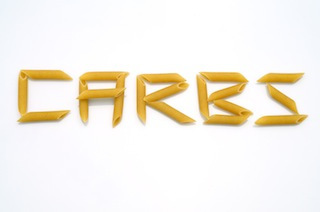 For today’s edition of Dear Mark, I’ll be addressing a single article from a highly-lauded intellectual institution: the Huffington Post. I’m kidding of course. The HuffPo has some great stuff, but they’ve also got to pay the bills and fluffy articles inevitably slip through the cracks. This article is one of the latter, claiming to give five definitive signs that you – the personal “you” – absolutely need to be eating more carbohydrates. How does it stack up?
For today’s edition of Dear Mark, I’ll be addressing a single article from a highly-lauded intellectual institution: the Huffington Post. I’m kidding of course. The HuffPo has some great stuff, but they’ve also got to pay the bills and fluffy articles inevitably slip through the cracks. This article is one of the latter, claiming to give five definitive signs that you – the personal “you” – absolutely need to be eating more carbohydrates. How does it stack up?
Let’s find out:
While I know you have answered all of these statements in one way or another in various posts I would love to see a response to this article about why we should eat more carbs. While I know it isn’t true, many people see these links on Facebook and other media and believe every word. Reassuringly, there were actually many comments arguing with the article which was great, I just thought it would be interesting to see your response.
Thank you!!!
Crystal
Excellent question. It’s good to have this stuff together in a single post as a reference, because these are common arguments. Let’s take each one apart separately:
“You have bad breath.”
This is ketone breath, caused by the expelling of ketone bodies through respiration. It’s normal if you’re in ketosis, and it’s actually a good indicator of that particular metabolic state.
So, is bad/ketone breath a sign that you should eat more carbs? That depends. If you’re trying to avoid ketosis, bad/ketone breath means you should eat more carbs. If you’re trying to stay in ketosis, or at least dally there for a bit, bad/ketone breath means you should not eat more carbs. It means you’re doing it right. So I guess it’s true in a sense for certain people in certain situations with certain goals, but it’s not a proclamation of absolute truth for everyone.
“Your workouts are slipping.”
The article bases this claim on the supposition that without carbs, you can’t build muscle – that instead of being used toward muscle protein synthesis, the protein eaten by a low-carber is broken down into glucose. Sounds somewhat reasonable. However, a recent review of the evidence concludes that while it’s a popular claim, there is no evidence that the addition of carbohydrates to a protein supplement will increase, acutely, muscle protein synthesis and, chronically, lean body mass to a greater extent than protein alone. All you need is protein for hypertrophy, according to the evidence.
What about the claim that we need tons of insulin to boost muscle growth? Well, we need some insulin, but we don’t need carbohydrates for that. Good ol’ leucine, an amino acid found abundantly in meat and milk, provokes enough insulin secretion to handle muscle protein synthesis when systemic insulin levels are already low. Anyone eating Primal will get plenty of leucine, and almost anyone eating lower-carb will have fairly low baseline insulin levels.
I’ve always said that eating some carbohydrate after a high-intensity, glycogen-depleting workout is the best time to eat it. You’re more likely to fill glycogen reserves that way and your muscles are insulin sensitive and thus require less to do the job. Exercise even up-regulates something called non-insulin dependent glucose uptake, a glycogen-repletion pathway that allows carbohydrate utilization without any insulin at all.
In my upcoming book, Primal Endurance, I’ll be exploring low-carb, high-fat, and ketogenic endurance training. It’s largely unexplored territory, and since the entire fitness industry revolves around the carb paradigm, I think this book will really turn some heads and open some minds.
“You feel a little fuzzy.”
Going low-carb impairs cognitive functioning, in other words. They cite a press release about a study in which women were either placed on a low-carb or low-cal (but normal carb) diet. After a week of eating their respective diets, the women took memory tests. The low-carb women performed more poorly than the low-cal dieters, and once they resumed eating carbs, their results improved. Here’s the actual study (and here’s the full PDF).
It turns out that they were testing the Atkins diet. The first week was Atkins induction, which basically eliminates carbs except for a few grams plus fiber. The second and third weeks introduced small amounts of carbs back in. According to the Atkins website, this phase of the diet involves eating 12-15 net carbs (carb grams minus fiber grams) and increasing the amount you eat by weekly 5-10 gram increments. So they didn’t go back to bagels for breakfast and sandwiches for lunch; they did not resume eating the same amount of carbs they were before the diet. They simply introduced a few more carbs after eating almost zero and this was enough to restore their mental faculties. They were still low-carb, or even very low-carb and they were almost certainly in ketosis. This sounds an awful lot like the Primal Blueprint Carb Curve, which supports up to 150 grams of carbs per day for maintenance or gradual fat loss.
The difference is that they’d had a week or two to become fat-adapted and get over the low-carb flu. They had begun compensating for the “missing” glucose by incorporating ketone bodies into brain metabolism. Being low-carb is a very different beast than going low-carb. It gets better.
“You’re cranky.”
While serotonin, the “feel-good” neurotransmitter, has difficulty crossing the blood brain barrier, its precursor, tryptophan, can slip past the barrier with the help of insulin and be converted into serotonin. Since carbs famously spike insulin, the article claims that carbs are required for serotonin synthesis and mood maintenance. Is it true?
Kinda. According to some studies, pure carb infusions – think marshmallows, rice cakes, plain toast – do increase serotonin levels and boost mood in certain populations, like people engaged in cognitively demanding tasks. Or high-intensity athletes who are burning up lots of glucose, like dancers (many of whom are elite athletes). They do see mood benefits with moderate carb intakes, but that’s not a matter of carbs so much as it’s a matter of avoiding hypoglycemia. One study cited in the article found that women on a low-carb diet reported a worsening of their mood over the course of a year, although the low-carb arm of the study had twice as many participants already taking anti-depressants, meaning they were kind of in a funk to begin with. That may be why depressed people often have carb cravings, as an unwittingly desperate attempt to synthesize the serotonin they so desperately miss. The problem is it’s not a sustainable or healthy path away from depression (what, are you just going to live on potato chips?) and often (and unsurprisingly) leads to weight gain.
There are better ways, I think. Carbs may boost your mood for a bit, but what happens after? We all have those coworkers who must constantly snack lest they fall asleep at their desks or snap at their cubicle mate. Heck, you probably once were one of those grouchy, snacking coworkers. Meanwhile, your protein and fat-rich breakfast may not get you cracked out and hyper, but it doesn’t leave you yawning when 11 AM rolls around. You’re not cranky if you’re asleep, though, so I guess they win on a technicality.
Exercise also increases the brain’s uptake of tryptophan. In fact, increased brain tryptophan uptake and serotonin synthesis may explain the astoundingly effective antidepressant effects of exercise.
Carbs can certainly help tryptophan uptake, and I’d argue that sane levels of carbs (see the Carb Curve again) are perfectly adequate in this regard, but you can’t get by on carbs alone. The best sources of tryptophan are animal products which the manufacturer tends to package with animal fat, so you can’t really escape the necessity of eating fat and protein for mood. All in all, I’d say most people who’ve gone Primal report improved mood, steadier energy, and a better overall outlook on life. I certainly have. And we don’t need to keep a plastic baggie of crushed up rice cakes on hand to maintain these benefits.
“You’re irregular.”
Constipation, diarrhea, or both are among the most common gut ailments across the Western world – and the vast majority of the afflicted are eating standard industrial diets, not low-carb Primal ones. This is not a problem unique to low-carbers. I’ve always supported the intake of prebiotic fibers to help normalize gut health and digestion. Everyone should probably be eating more fermentable fibers from fruits and vegetables. This is where something like resistant starch comes in.
Remember, low-carb is not zero-carb or zero-plant matter. In my experience, Primal people eat way more vegetation and get way more non-grain fiber than most vegetarians. But if this is a blind spot for you and you are having trouble in the bathroom, then I suppose your gut flora need to be eating more carbs. It doesn’t mean you, the host of the flora, necessarily need to eat more carbs.
Bottom line: this article makes some technically true statements, but misappropriates them in a sneaky, misleading, underhanded way. These “laws” don’t apply to everyone.
Thanks for reading, everyone!
Not a Subscriber? You Are Missing Out. Subscribe for Free Today and Instantly Get 8 Primal eBooks and So Much More!




June 8, 2014
Weekend Link Love
 I am an investor in an exciting new gym in West Los Angeles called Sirens and Titans. I will be giving a talk there on performance and ideal body composition on Sunday, June 22. It’s limited to 60 participants. I’ll give my talk and then it will be followed immediately by a HIIT workout that anyone can do…on the VersaClimber. Learn more here and get your tickets here.
I am an investor in an exciting new gym in West Los Angeles called Sirens and Titans. I will be giving a talk there on performance and ideal body composition on Sunday, June 22. It’s limited to 60 participants. I’ll give my talk and then it will be followed immediately by a HIIT workout that anyone can do…on the VersaClimber. Learn more here and get your tickets here.
The South Asian Health Solution, the first book to provide an ancestral health-based wellness plan culturally tailored for those of South Asian ancestry, can now be had in audiobook format. Listen at your leisure!
Leslie Klenke’s Paleo Girl is due for official release on June 10th. Leslie recently hung out with Sam Feltham of Smash the Fat fame to talk about her book, a sort of “junior version” of The Primal Blueprint designed for teen girls. If you know someone who fits that description, they need this book. Check back here on MDA on the 10th for more details and giveaways.
Episode #22 of The Primal Blueprint Podcast is now live, and I’m answering reader questions. If you have any ideas for future podcasts, please let us know by using the blue “Submit a Question” button in the sidebar!
Research of the Week
Blue light exposure at night increases hunger, induces insulin resistance, and keeps you awake.
Note takers who use laptops tend to transcribe lectures verbatim and subsequently perform worse than pen-and-paper users on tests about the material.
So it turns out that Hadza hunter gatherers do expend more energy than sedentary Westerners.
Added sugar from liquids, but not solids, is associated with insulin resistance and disrupted glucose homeostasis in kids.
A single night of sleep deprivation blunts the normal morning decrease of a pro-Alzheimer’s brain protein.
Interesting Blog Posts
Higher potency statins are linked to higher incidences of diabetes. Another winner from Dr. Briffa.
Applying evolutionary principles to gardening.
Media, Schmedia
A NY Times columnist visits Colorado to sample the local fare and bites off more than she can chew.
Monsanto isn’t very pleased with Vermont’s new GMO label law.
Another doctor questions the “statins for all” orthodoxy. I’m sure he’ll be savaged for it in the coming days.
Everything Else
President Obama works out in a Polish hotel gym. Nice to see he avoided the Smith Machine.
Dr. Aaron Blaisdell (a good friend of mine) sat down at the Not Just Paleo podcast to talk about chimp strength, the effect of stress on the brain, and happiness.
Turns out that everyone loves the running wheel.
What and how much do people eat around the world? Photographic evidence.
Washington DC is feeding the homeless by culling deer and serving them up.
Whales sure do know how to play.
Dogs, too. This video might represent the purest vision of unbridled joy.
Recipe Corner
Primal low-heat grilled bacon avocado and mushroom cheeseburger with a lettuce wrap. Low in carcinogens, high in flavor.
Egg chicken pasta. Yes, you read that correctly. Follow the link.
Time Capsule
One year ago (June 8 – June 14)
Salt: What Is It Good For? – Why we need and crave salt.
Have You Achieved Your Physical Potential? – No matter how broken or out of shape or un-elite you may consider yourself, it’s important to shoot for your version of the stars.
Comment of the Week
I remember eating milky ways in my back yard…
Get the 7-Day Course on the Primal Blueprint Fundamentals for Lifelong Health Delivered to Your Inbox for FREE




June 7, 2014
Slow Cooker Harissa Stew
 Remember this delicious harissa lamb chop recipe? Take the recipe’s advice and also try harissa – a spicy North African condiment you can make at home with dried chiles, garlic, coriander, cumin, caraway and olive oil – as a rub for other types of meat like pork or beef. This recipe for slow cooker harissa stew guides the way.
Remember this delicious harissa lamb chop recipe? Take the recipe’s advice and also try harissa – a spicy North African condiment you can make at home with dried chiles, garlic, coriander, cumin, caraway and olive oil – as a rub for other types of meat like pork or beef. This recipe for slow cooker harissa stew guides the way.
In this recipe, harissa gives the stew meat complex, spicy flavor but the stew isn’t overly hot. However, if the moderate level of spiciness is still too hot for you, then cool the stew down by adding extra coconut milk at the end. If the stew isn’t spicy enough, then use leftover harissa as a condiment served with the stew.
Why the recent obsession with harissa? The stuff’s addictive, for one. The peppers and spices in harissa also provide a healthy dose of antioxidants. This stew recipe throws in even more spices on the side for good measure, like cinnamon, turmeric and cardamom.
Like most slow cooker meals, this is a simple “toss it in the slow cooker and forget about it” recipe. And like most stews, it tastes even better a day or two later, so pray for leftovers.
Servings: 6 to 8
Time in the Kitchen: 40 minutes active time, plus 6 to 8 hours in the slow cooker
Ingredients:
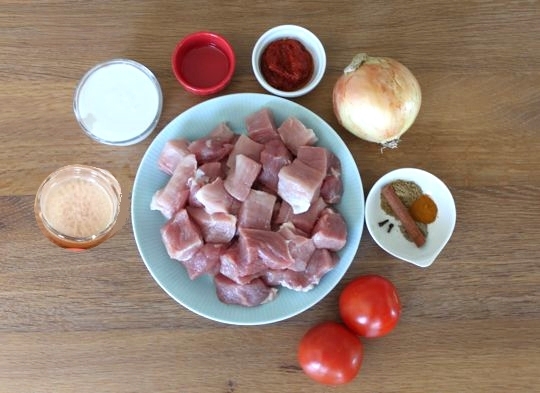
3 pounds (1.4 kg) boneless pork or beef shoulder (or other cut of stew meat) cut into 2-inch (5 cm) pieces
2 tablespoons harissa (15 ml)
2 tablespoons coconut oil (15 ml)
1 cup beef broth (240 ml)
1 onion, thinly sliced
2 large tomatoes, chopped
2 teaspoons ground coriander (10 ml)
1/2 teaspoon ground turmeric (2.5 ml)
1/4 teaspoon ground cardamom (a pinch)
2 cloves
1 cinnamon stick
1/2 cup coconut milk (120 ml)
Instructions:
Rub the meat down with harissa and generously salt. Let the meat come up to room temperature for 20 minutes or so while you prep the rest of the ingredients.
Heat the coconut oil in a large skillet. Add half of the meat to the skillet and cook over high heat until browned all over. Transfer the meat to a slow cooker. Continue until all meat is browned.
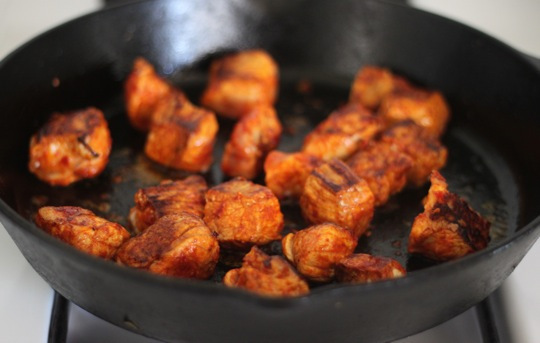
Add the beef broth to the skillet and bring to a boil, scraping up any browned bits of meat stuck to the skillet. Pour the liquid into the slow cooker.
Add the onion, tomatoes and their juice, coriander, turmeric, cardamom, cloves, cinnamon stick and coconut milk to the slow cooker and mix in well with the meat.
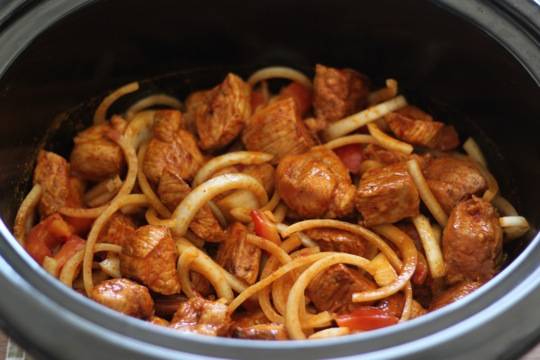
Cook on low 6 to 8 hours until meat is tender.
Spoon off the fat from the surface of the sauce, if needed. Add more coconut milk to the broth if you like.
Garnish with chopped cilantro or parsley.
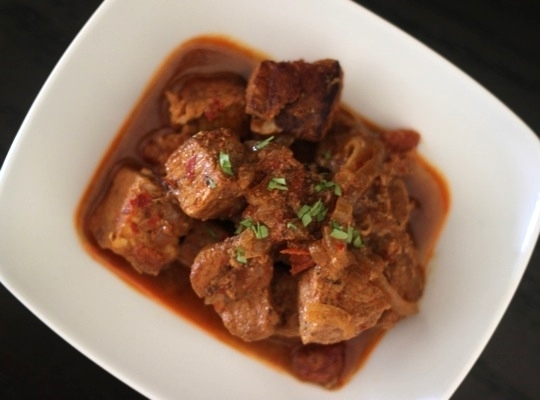
Not Sure What to Eat? Get the Primal Blueprint Meal Plan for Shopping Lists and Recipes Delivered Directly to Your Inbox Each Week




June 6, 2014
Teen Goes Primal, Has More Energy for Her Passion
It’s Friday, everyone! And that means another Primal Blueprint Real Life Story from a Mark’s Daily Apple reader. If you have your own success story and would like to share it with me and the Mark’s Daily Apple community please contact me here. I’ll continue to publish these each Friday as long as they keep coming in. Thank you for reading!
 Hi, my name is Lauren and I’m a fourteen-year-old Primal teen. My mom switched to the Primal lifestyle a year and a half ago after reading The Primal Blueprint. I decided to try it with her, not for weight reasons (I’m 5’8” and 120 lbs) but to help with some annoying acne issues and to try to be stronger and healthier.
Hi, my name is Lauren and I’m a fourteen-year-old Primal teen. My mom switched to the Primal lifestyle a year and a half ago after reading The Primal Blueprint. I decided to try it with her, not for weight reasons (I’m 5’8” and 120 lbs) but to help with some annoying acne issues and to try to be stronger and healthier.
Since about fourth grade (I’m in eighth now) I have missed around twenty-five days of school each year from colds, ear infections and other minor infections. What should have been little illnesses somehow put me in bed for a week at a time. I ride five days a week, give riding lessons to younger kids, and show once or twice a month, so I was missing things that I love to do and always ended up feeling weak. I also had these small clusters of annoying pimples that wouldn’t go away, no matter how much I washed my face or used drying lotions.
Until a year and a half ago, I ate like most of my friends. Breakfast was something easy to grab, like cereal, a bagel, yogurt, or a muffin. Lunch was whatever school served that day and my mom cooked dinner most nights.
The first two weeks were pretty hard, I missed certain foods, and I felt kind of tired and hungry all the time, but after that, switching wasn’t too bad. Mom makes sure that there are always plenty of snacks around like nuts, fruit, beef jerky, and deviled eggs (my favorite, especially with roasted prosciutto on top). I do miss bread in the morning, so sometimes Mom makes things from coconut flour or almond meal that I love. I take my lunch to school everyday because it’s easier than trying to make a Primal meal from the school lunch line, and dinner is some kind of meat and veggies. Sometimes I want dessert, so I will have dark chocolate or berries with whipped cream. For a treat, Mom will make ice cream sweetened with coconut sugar.
The first thing I noticed is that my pimples went away within a week! I mean totally gone! These pimples had been on my face for months and would not go away and suddenly they disappeared. Sometimes if I eat the wrong things, they come back a little, but never like before.
Also, after the first two weeks passed, I felt stronger and more energetic. Which really helps when I’m at the barn. I always ride my own horse, but I ride other horses at the barn too. I usually give at least six riding lessons a week, so I am in the saddle behind little kids or running along side them on the ground. It’s a long day and takes a ton of energy, but it’s my favorite thing to do in the whole world! I am also raising and training my next horse so I have to take care of her after I finish at the barn.
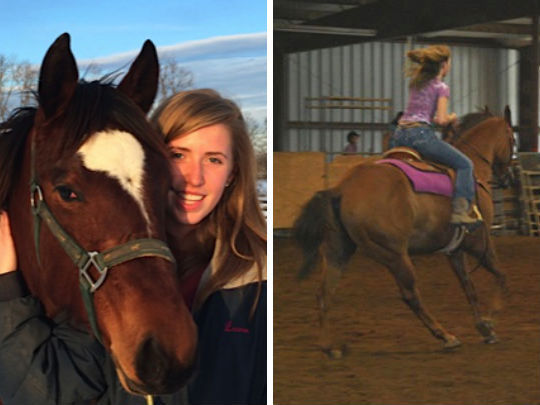
The one thing I hadn’t expected was the change in my health. I didn’t notice it at first, but then after about four months I realized that I hadn’t been sick, not one cold or anything!
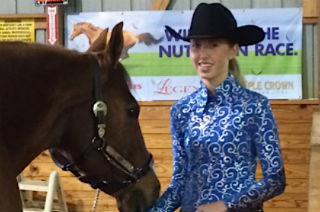 Certain things are harder for me than others, like holidays, parties, sleepovers and traveling to horse shows. I like the foods that I used to eat and sometimes I can’t resist. I haven’t been perfect and a have gotten off track a couple times, but I usually end up sick and my acne comes back, so my mom helps me get going again. She never pushes me, she says it’s my decision if I want to eat this way, but she does everything she can to support me. She says it’s harder for kids to be Primal because they aren’t really in control of what they eat. They don’t get to grocery shop and most other people never ask what kids want to eat, they just assume pizza or fast food will make them happy. I’m learning to make the best choices I can, even in difficult places like gas stations or fast food restaurants, which is usually where we stop when I travel to horse shows with my barn. I want to learn to cook now so that when I go to college, I will be able to stay healthy and fix Primal meals for myself.
Certain things are harder for me than others, like holidays, parties, sleepovers and traveling to horse shows. I like the foods that I used to eat and sometimes I can’t resist. I haven’t been perfect and a have gotten off track a couple times, but I usually end up sick and my acne comes back, so my mom helps me get going again. She never pushes me, she says it’s my decision if I want to eat this way, but she does everything she can to support me. She says it’s harder for kids to be Primal because they aren’t really in control of what they eat. They don’t get to grocery shop and most other people never ask what kids want to eat, they just assume pizza or fast food will make them happy. I’m learning to make the best choices I can, even in difficult places like gas stations or fast food restaurants, which is usually where we stop when I travel to horse shows with my barn. I want to learn to cook now so that when I go to college, I will be able to stay healthy and fix Primal meals for myself.
I love the Primal lifestyle! It makes me look and feel better and I definitely like being healthier all the time. It might be a little harder for kids because they need an adult in their life help them out, but there is always a way to make it work!
Lauren
Make sure to check back on Tuesday for the very special release of Paleo Girl, a book written specifically for young Primal women!




June 5, 2014
Will You Make This Summer Your Best Summer Yet?
 I’m not sure exactly why January gets all the hoopla here. When it comes to change, it seems like winter (all right, not here in Southern California) might be the most difficult time of year for some people to take on serious change. Sure, after the excess of the holiday season people are feeling penitent. They’re also perhaps ready to accept some quiet, “inward” time after the social overkill of the previous weeks. And, of course, it’s cultural sentiment to look back fondly on the year, clink the glasses at midnight and envision a beautiful, better year ahead – a vision that holds our collective attention for about a week. Well-intentioned as it is, New Year’s motivation is too often a flash in the pan. Maybe little wonder. The winter weeks that follow – truly brutal in some areas of the country – can be as inspiring as scraping your windshield. While I’m all for making change whenever (Isn’t it always a good idea, regardless of the calendar?), I wonder if there isn’t something backwards about this typical scenario. Personally, I get to June and sense that a certain energy and rare enthusiasm are accessible again (not to mention the inviting weather, longer days and fresh markets). You can literally see it in people. Who doesn’t know what I mean here (those of you with standard seasons at least)? Doesn’t this seem like the perfect time to imagine something new and ambitious for yourself? Part challenge, part resolution, part bucket list, part self-experiment? Humor me on this path for a bit….
I’m not sure exactly why January gets all the hoopla here. When it comes to change, it seems like winter (all right, not here in Southern California) might be the most difficult time of year for some people to take on serious change. Sure, after the excess of the holiday season people are feeling penitent. They’re also perhaps ready to accept some quiet, “inward” time after the social overkill of the previous weeks. And, of course, it’s cultural sentiment to look back fondly on the year, clink the glasses at midnight and envision a beautiful, better year ahead – a vision that holds our collective attention for about a week. Well-intentioned as it is, New Year’s motivation is too often a flash in the pan. Maybe little wonder. The winter weeks that follow – truly brutal in some areas of the country – can be as inspiring as scraping your windshield. While I’m all for making change whenever (Isn’t it always a good idea, regardless of the calendar?), I wonder if there isn’t something backwards about this typical scenario. Personally, I get to June and sense that a certain energy and rare enthusiasm are accessible again (not to mention the inviting weather, longer days and fresh markets). You can literally see it in people. Who doesn’t know what I mean here (those of you with standard seasons at least)? Doesn’t this seem like the perfect time to imagine something new and ambitious for yourself? Part challenge, part resolution, part bucket list, part self-experiment? Humor me on this path for a bit….
When I lived in Maine decades ago, I always had the sense that the world woke up about now (blackflies aside). You saw your neighbors again (sans parka and shovel). Face it: you saw your own skin again. Literal and metaphorical layers were exuberantly shed. Community calendars were filled to the brim, competing for the limited supply of summer weekends. It’s an interesting mentality, especially for Northerners – something like carpe diem on steroids. I was thinking about the concept this week. How do we harness the energy (and opportunity) of the summer while resisting its more manic pressures?
Personally, I like to use summers to develop something new in my Primal life. It’s not about applying hard core discipline to reach a new level of strictness. In fact, it’s usually about loosening up. By choice and circumstance, I open to new possibilities I hadn’t considered before. Slowing down helps that, and for me summer is for slowing down more than ramping up. I dare say if you went back in the archives here you’d find that a lot of new dimensions to the Primal Blueprint made their first appearances in the summer months. Certainly, The Primal Connection came out of a couple summers’ worth of exploration.
So, here’s my thought….
What would it take to make this summer somehow the best ever – a new pinnacle for you? Seriously. A more fulfilling time, an experience that initiates a new chapter, a welcome if unexpected change? Sure, it smacks of that old Seinfeld theme, “the summer of George.” We laugh at the concept, but maybe in the back of our minds we’re kind of wondering, “why not?” Put aside any skepticism or any thought that this summer is already accounted for with work and family plans. Just brush that to the margins and hold the idea for a moment. What would it take?
I’m not talking really about a bucket list, which too easily becomes an inventory of “achievements” in the same way people talk about “doing” Paris or “bagging” Hong Kong. For a moment, take a step back from the generativity mindset that drives this strange bus of a culture we live in, and get in your Grok mind. What would leave your Primal self fully sated come Labor Day? What would make you feel meaningfully expanded and content in ways exceeding your summers in the past?
Beyond the realm of acquisition or (most kinds of) achievement, there’s unfiltered experience and undistracted connection – rarities in the modern world. Even experts stress that experiences are what offer us lasting joy, that memories are the “durable goods” of a life well lived. Will a boilerplate summer routine offer you much of that?
In true Primal fashion, I’m not suggesting living well means living large or that we need to upend every welcome custom of summer. Think back to your own positive memories of childhood summers. What comes to mind? A lot of it might seem mundane in adult retrospect, but what’s likely underlying it is a sense of natural ease, of unbridled freedom, of subtle ritual, of sensory keenness, of unfettered connection. Funny, these are exactly the layers of experience we lose touch with as adults, as we expend our energy attempting to manage our (or our kids’) experiences, record every meaningful moment on our phones (or encapsulate it for a Facebook status). Maybe we’re so tired, overworked or distracted, we seldom even get that far. Sometimes people work a whole summer waiting for a big vacation that barely registers past the ride home.
A bucket list can work the same – this restaurant, that park, this outdoor festival. We check off the experience but maybe don’t take much away from it. What if, instead of acting on our list like a collection of do-to items (however positive), we prioritized our own lens and let the places we go and things we do act on us? Have a list of what intrigues you, but go and do with the thought of coming away changed. Seek out what touches and transforms you on a personal, however simple or subtle level, and what makes the list just might change.
If you’ve been doing the diet and absorbing the fitness suggestions up until this point, resolve to jump in with both feet this season. Challenge yourself to appropriate it as a way of interacting with life and not just as an alternative meal plan. Use the concept of “Grok mind,” “Primal lens,” or whatever makes sense. Push your own envelope with self-experimentation – daily. Embrace the dirt, the wild, the reflection, the exertion, the quiet, the attentiveness. Master the art of doing nothing, live outside every possible moment (cajole your way to working from home?), seek out 15 minutes of pure silence (in your own head) every day, catalog the birds you see every month, go barefoot and look for sensory opportunities for your feet, lose any inhibition about baring your body (within legal limits) no matter what your size, grow something, spend an entire afternoon observing natural or manmade minutiae, get in the water, watch a dog in the water, let go of a grudge, sleep on the ground, people watch at the lake, do a weekly bonfire, cook something you catch, put your furniture outside, burn a message you have about yourself, watch the clouds at 2 o’clock on a Wednesday, build a fort, sit outside at night and listen to the bugs, get up for the sunrise and walk barefoot on the morning dew, create or record something that captures the thoughts you have when you break the routine this way.
What does this bring up for you? What ideas or interests come to mind? What could be different or uniquely Primal about this summer for you? Offer up your thoughts, and thanks for “journeying” with me today. Can we say it yet? Happy Summer, everyone.
Get the 7-Day Course on the Primal Blueprint Fundamentals for Lifelong Health Delivered to Your Inbox for FREE




June 4, 2014
A Quick Guide to Perfect Eggs: 22 Tips for Buying, Storing and Cooking a Primal Favorite
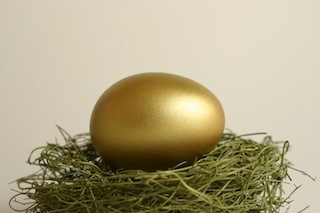 Primal eaters like eggs and eat many of them. What’s not to love? Highly bioavailable protein. Extremely nutrient dense. A good source of fat, including omega-3s if you pick the right type of egg. Versatile; good for breakfast, lunch, and dinner. It even comes in a tidy little package that travels well. And eggs are inexpensive, especially for the amount of nutrition and enjoyment you get. Yeah, eggs are good. Real good.
Primal eaters like eggs and eat many of them. What’s not to love? Highly bioavailable protein. Extremely nutrient dense. A good source of fat, including omega-3s if you pick the right type of egg. Versatile; good for breakfast, lunch, and dinner. It even comes in a tidy little package that travels well. And eggs are inexpensive, especially for the amount of nutrition and enjoyment you get. Yeah, eggs are good. Real good.
We don’t want to squander this precious gift from the feathered gods. So today, I’m giving you my top 22 tips, tricks, and guidelines to make the most of your eggs.
How to know if they’re spoiled. Place your eggs in a bowl of cold water. If they sink, they’re good. If they float, they’ve gone bad. If they start to float but keep one end on the bottom, they’re good but not for long. Also works for determining the guilt of suspected witches.
How to boil eggs to desired doneness. Place eggs in a pot or pan and fill with water until it reaches midway up the eggs. Remove the eggs and set aside. Bring the water to a boil at medium/medium-high heat (4 on a scale of 6). Return the eggs to the now-boiling water and cover the pot. For soft-boiled, remove eggs after 6 minutes 30 seconds. For medium-boiled, remove eggs after 8 minutes. For hard-boiled, remove after 10 minutes. After removing eggs, place under cold running water for at least 30 seconds. Drop the cooking time by 30-45 seconds if your eggs are room temperature.
Softer yolks are better for you than harder yolks. The harder the yolk, the more oxidized cholesterol (which coincidentally may not be huge issue for people who eat just a few eggs occasionally, but the more eggs you eat the more it matters). Softer yolks are just better, period.
How to peel boiled eggs. Tim Ferriss has a nifty trick where he cracks both ends, blows into it, and out pops the egg. I’ve had mixed results with this method, but if it works for you, it’s definitely the quickest way. I prefer to let the egg come to room temperature, either using cool water or time, and roll the eggs along the counter to create a web of mini cracks. This seems to separate the white from the shell and make peeling easier. Also: the fresher the egg, the more difficult it is to peel.
How to “boil” eggs and make them easily pop out of their shells. Use the steam setting on an electric pressure cooker, like the Instant Pot, for two minutes (for soft-boiled), three minutes (for medium-boiled), and four minutes (for hard-boiled but not overdone). Place in ice water for a minute and the peel should slip right off.
How to eat boiled eggs. Two ways: kosher salt and kelp powder; or kosher salt, black pepper, and turmeric.
How to cook an omelet. Got 20 seconds, two eggs, and a tablespoon of butter? Do it like Julia Child, the master.
How to cook an omelet stuffed to the gills with several pounds of ingredients. You don’t, unless you like a huge ordeal and leathery eggs. If you want eggs with tons of ingredients, make a scramble.
How to scramble eggs. There are two acceptable ways. First is Gordon Ramsay’s method, which involves lots of whisking, lots of butter, and creme fraiche. Scrambled eggs this way come out soft and slightly wet. Another method is to heat butter (or olive oil) on a stainless steel pan over medium high heat, crack whole eggs into it, and let them cook a bit – as if you were doing sunny side up eggs. Right when the bottom begins to set, go to work with your spatula, chopping and cutting and breaking up the eggs. Scrambling, in other words. As with Ramsay’s method, take the eggs off before they fully cook.
How to fry an egg. Let the pan get hot over medium heat. Don’t rush it. Don’t be impatient. That blue stuff flickering down below the frying pan? That’s pure unadulterated fire. It’s really hot and it won’t be long until the pan is hot, too. If you don’t wait, the egg will stick to the bottom and you’ll have to soak it to get the egg off and the yolk will probably break prematurely and it’ll be a whole thing. Once a drop of water sizzles into nothingness against the surface, add the fat, let it melt. Crack in the eggs. Let a shape start to form, then you have a few options. 1. Drop in a tablespoon of water and cover the pan, steaming the egg. 2. Flip the egg and turn off the heat, letting the pan cook the other side. 3. Turn the heat down and let the egg continue cooking through to the other side. Oh, and the pan should be cast iron and well-seasoned.
How to poach an egg without ruining it. Poaching eggs is annoying, time consuming, and often messy, but you can’t deny that it’s impressive and delicious when you get it right. Forget the swirling vortex, the poaching contraptions, the agony, the heartache; poach your eggs in a mesh strainer. And use the freshest eggs possible.
22 Eggcellent Ideas: How to Perfect a paleo/Primal Staple

How to separate the white from the yolk. If I’m short on time, I’ll sometimes pop a few yolks in my mouth raw. I no longer mess around with passing the egg between shell halves (the eggs I buy have shells with strong membranes that make symmetrical halves difficult to achieve). Instead, I just crack the egg into my open hand and let the white slip through my fingers. To get that the chalazae off (the stringy thing that attaches the yolk to the shell), I pinch it between two fingers. Easy.
If you want to get fancy, you could also use an empty plastic water bottle.
How to break an egg. It’s unavoidable. You have to break the egg eventually, but how? There are many methods – one-handed, two-handed, with a knife, against a flat surface, against the edge of a bowl – but the tie that binds them all is this: a single swift smack. You must be confident. You can’t dilly dally and take a halfhearted whack that merely dents the egg and makes the job harder. Take control of the situation. Flick the wrist and “execute it quickly, like with the guillotine.”
How to get broken shells out of a cracked egg. We’ve all spent fruitless hours chasing the wily little devils around the pan with our fingers. It’s like trying to look at an eye floater head on: completely impossible. If you just use a jagged piece of egg shell itself, you can cut right through the white and nab the errant fragment. Like attracts like.
How to use yolks to thicken sauces. Butter and cream make for rich sauces, but my favorite way is to take the sauce off the heat and whisk in two raw yolks. Added viscosity and nutrition.
Spring for pastured eggs. They’re pricey, I know. But they taste so much better than battery-farmed eggs, they’re far more nutritious, and they contain more antioxidants like vitamin E that protect the yolk from oxidation during storage and cooking.
Find pastured eggs on Craigslist. Pastured eggs from the market can be really expensive, and often not that impressive. And some places might not even stock them. You’d be surprised at what you can find by searching Craigslist for eggs.
Look for duck eggs. Don’t give up chicken eggs altogther, but work duck eggs into the mix. If you can get them for the same price per egg, you’ll come out ahead as duck eggs are far richer and larger than chicken eggs. Plus, according to an admittedly biased source (DuckEggs.com), duck eggs are more nutritious than chicken eggs on a gram for gram basis. I suspect that may be an artifact of using battery-farmed chicken eggs rather than pastured eggs in the comparison.
They last longer than you think, even outside the fridge. Eggs are good for a couple months in the fridge. I’ve even left eggs out on my counter for almost a month – not during the heat of summer, but in fairly warm temperatures (~75 ºF) – and they were perfectly fine. Always do the cool water test explained above before tossing them.
Once refrigerated, always refrigerated. If your eggs have been refrigerated, they can’t become counter eggs. Avoid condensation on the shells.
When choosing eggs, look for a carton with a cracked egg. Play around with the broken shell a bit (it’s already broken so no harm, no foul) to see how much give it has. Avoid weak shells, which aren’t just hard to handle without breaking but also indicate nutrient deficiencies or excessive stress in the hen’s life. A cracked egg may even give you a glimpse at the yolk; you want dark, orange yolks whenever possible.
What to do with all the shells. Boil them, bake them, and grind them into calcium carbonate powder. Crush them and feed them to your chickens as a calcium supplement, compost them, or add them to your garden soil as a mineral supplement.
That’s what I’ve got, folks: all my favorite tips for enjoying your eggs to the fullest. What about you? What advice would you give a young man who’s never even kissed an egg?
Thanks for reading!
Get the 7-Day Course on the Primal Blueprint Fundamentals for Lifelong Health Delivered to Your Inbox for FREE




June 3, 2014
10 Healthy Morning Pick-Me-Ups That Aren’t Traditional Coffee or Tea
 Now, I don’t need coffee in the mornings. You won’t hear me complaining or freaking out or freebasing Folger’s Instant off a soup spoon if I don’t “get my morning coffee” (well, maybe a small grumble if it’s the wrong morning), but I usually like to have one in the morning. It does the trick. It tastes good. It gives me a little leg up. That’s a common current running through this community – we don’t need the morning pick-me-up, but we sure do enjoy it. Not everyone likes coffee or tea, though. And some people (like me) are just curious enough to want to try every other possibility available. It’s just fun to try new options.
Now, I don’t need coffee in the mornings. You won’t hear me complaining or freaking out or freebasing Folger’s Instant off a soup spoon if I don’t “get my morning coffee” (well, maybe a small grumble if it’s the wrong morning), but I usually like to have one in the morning. It does the trick. It tastes good. It gives me a little leg up. That’s a common current running through this community – we don’t need the morning pick-me-up, but we sure do enjoy it. Not everyone likes coffee or tea, though. And some people (like me) are just curious enough to want to try every other possibility available. It’s just fun to try new options.
Not every selection is buttressed by reams of clinical evidence. At the very least, it can’t really hurt to try and even if it doesn’t help wake you up, the other proven health benefits probably make it worthwhile. Let’s jump right in…
Coca Tea
Coca tea has quasi-legal status in many countries, including the United States. No one sells it here (legally), and you can’t buy it in any stores, but it is possible to order online. Despite its reputation, coca leaf is not cocaine. To condemn coca leaf for its cocaine content would be to reject blueberries because they contain sugar. Powdered and isolated cocaine is a perversion of a legitimately beneficial herb with many different alkaloids. Coca provides smooth energy, perhaps partially because it promotes an increase in the use of fat as energy substrate during exercise while sparing the breakdown of amino acids from muscle. And yes, “exhaustive extraction” from a gram of coca tea (the amount in a tea bag of standard size) nets about 5 mg of cocaine, about 1/8 the typical recreational dose of powdered cocaine, but brewing it in your kitchen produces far less. Traditionally, people would jam a wad of coca leaves and an alkali source (lime or sodium bicarbonate to enhance alkaloid availability) in their cheek and chew on it for an hour. You can empty out a bag of tea, add some baking soda, stuff it in your maw, and get similar results. Just be careful if you get drug tested, as coca tea can result in a false positive for cocaine for at least three days.
Yerba Mate
Another South American hot herb drink with stimulating properties, yerba mate’s primary active compound is none other than caffeine. It’s got about the same amount as tea, less than coffee, plus other compounds (but none with proven stimulant qualities except for maybe theobromine). Caffeine is clearly the main player, and we all know that caffeine works. There are correlational studies linking yerba mate to esophageal and oral cancers, but that’s partially explained by the temperature at which the tea is commonly served. Hot beverages in general have been linked to those same cancers, not just yerba mate. Depending on how it’s processed, yerba mate often contains significant amounts of polycyclic aromatic hydrocarbons (PAHs), a potential carcinogen that’s often found in other roasted plant-based infusion drinks (like coffee). That’s because most commercial yerba mate is dried and smoked using burning wood for up to a day – barbecued, basically. Yerba mate that’s air dried without smoke, like this one or this one, should have fewer PAHs.
Hot Chocolate with Cayenne
That cayenne powder shot I mentioned a few weeks back certainly wakes you up, but it’s not very pleasant and it involves consuming a large amount of very spicy powder in a single go – only the rare bird with a daily capsaicin habit will be able to use that one consistently. Instead, make real hot chocolate with good, bitter cacao powder and spike it with as much cayenne as you can handle. The cocoa has stimulating alkaloids (like theobromine) and the cayenne resembles a more pleasant, delicious version of pulling a nose hair to wake up. Spicy food also increases thermogenesis, especially paired with coconut.
Whey Protein Isolate (at Night)
Okay, so it’s not a quick fix when you’re feeling run down in the morning. You have to plan ahead and down it at night. But it works. Consuming the alpha-lactalbumin in whey (or milk) before you go to sleep increases tryptophan production at night which leads to increased wakefulness in the morning. Plus, drinking whey isolate at night also boosts morning energy expenditure (hey, maybe that’s part of the reason why you’re more alert – you’re utilizing more energy!), improves cognitive performance, and elevates mood. Who wouldn’t want to start the day with all that going on?
Protein and Fat
If you’re going to eat something in the morning, make sure it has protein and fat. A few eggs, maybe a bowl of Greek yogurt, a steak, whatever. Your breakfast should be protein- and fat-centric. Eat some fruit or something if you feel like it, but don’t go too heavy on the carbs. They offer quick but short-lived energy that often contributes to the midday crash (and excessive snacking), whereas protein and fat (especially combined) provide sustained energy you can coast on through to the afternoon.
Coffee Bean
I know I said “that aren’t traditional coffee,” but I’m talking about adding entire beans to your morning smoothie. Eating beans is definitely a non-traditional way to consume coffee and since consuming the entire bean means consuming every last physiologically relevant coffee compound available, it’s a different feeling than a regular hot water extraction, and you don’t actually need as many beans as you’d need to brew a pot. A tablespoon or two of good quality coffee beans will do. I find the stimulation from whole beans far smoother than brewed. Not that coffee gives me the jitters on a regular basis, but it never does when I eat the whole bean.
Medium Chain Triglycerides/Coconut Oil
Consuming MCT oil or coconut oil provides instant substrate for ketone production. You don’t need to eliminate all carbs, fast for 24 hours, or limit protein. You just eat a tablespoon or two and get “mild, sustained ketonemia” that contributes about 9% of the brain’s energy requirements. It’s also a well-known promoter of diet-induced thermogenesis. Basically, MCTs and to a lesser extent coconut oil provide a nice whack of free fatty acids ready to be burned for energy – if you’ve got the proper metabolic machinery set up to take advantage of them. If you’re a fat-burning beast, it’ll wake you up. I experienced the energizing potential of MCT oil firsthand when I made mayonnaise with two or three tablespoons of it and consumed the entire batch in a sitting. A “nervous” energy pulsed through me almost right away, almost a queasiness. Honestly? It was unpleasant and it was just too big a dose of straight-up MCTs. A tablespoon is a better dosage to start with.
Rhodiola Rosea
If you find yourself dragging in the morning, noon, and night because of mounting stress, consider rhodiola rosea. It’s an adaptogenic herb that’s been used for hundreds of years to combat stress-related fatigue. Rather than a quick fix, however, rhodiola rosea is all about the long game. Taking it once might not do much. Taking it once a day for a couple weeks could bring you back to baseline and reduce mental fatigue, which feels incredibly energizing when you’ve been floundering in the basement for so long. Be consistent with it if you’re going to use it, as I am with Primal Calm.
Sparkling Mineral Water with Salt and Citrus
As you know, I’m not a big “8 glasses of water a day minimum or else you’ll shrivel up” kinda guy. Just listen to your body, drink when thirsty, and you’ll be fine. That said, if you wake up feeling run down with an almost imperceptible inkling of a headache emerging and a dry mouth, I find that a tall glass of sparkling mineral water, a healthy shake of salt (sea, Himalayan, Celtic, Hawaiian, your choice), and the juice from one lime or lemon (give it a good roll on the counter first to break up the cells and liberate the juice) will have you feeling better, faster, than anything else on this list. Or off it. Even if you’re not dehydrated, water-soluble, easily-absorbed minerals are a great way to start the day.
An “All of the Above” Smoothie
Yes, it’s possible to combine all of the above ingredients into a somewhat palatable smoothie. I haven’t yet discovered the formula, but it must exist as some Platonic ideal. Right?
That’s it for today.
And if anyone does figure out the perfect recipe that incorporates all the mentioned ingredients into a palatable (or at least edible) smoothie, please let us know in the comment section. I’d love to try it.
Thanks for reading, everyone.
Like This Blog Post? Dig Deeper with Primal Blueprint Books and Learn How You Can Reprogram Your Genes to Become Leaner, Stronger and Healthier




June 2, 2014
Dear Mark: Young Guy, Low Testosterone; RS for Babies; and Sprints vs Tempo Runs
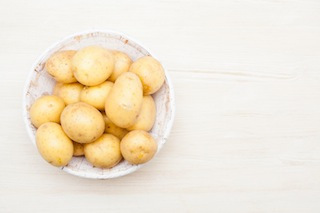 For today’s edition of Dear Mark, I answer three questions. First up is a young guy with low testosterone. He eats the right foods, does the right exercises, and has lived the right number of years, but he’s saddled with the testosterone of a much older man and wants to know why. Next, I discuss whether resistant starch is suitable or important for infants. The parents are benefiting from it, but does that mean an infant needs it, too? And finally, I explore the value of tempo runs - tough but doable runs maintained at the anaerobic threshold pace – for fat loss. How do they compare to my favorite fat burning exercise – sprints?
For today’s edition of Dear Mark, I answer three questions. First up is a young guy with low testosterone. He eats the right foods, does the right exercises, and has lived the right number of years, but he’s saddled with the testosterone of a much older man and wants to know why. Next, I discuss whether resistant starch is suitable or important for infants. The parents are benefiting from it, but does that mean an infant needs it, too? And finally, I explore the value of tempo runs - tough but doable runs maintained at the anaerobic threshold pace – for fat loss. How do they compare to my favorite fat burning exercise – sprints?
Let’s go:
Hey Mark. Your site is great! I’ve learned a lot. I just have a question. Despite the fact that I lift weights (squats, ring dips, pullups) 3x a week and do jiu jitsu 2x a week, along with eating plenty of chicken, beef, eggs, etc. my testosterone at 19 years old is 270 (low end of normal). All my doc said was remove GMOs, erhaps increase my calories (I’m 145 lbs with 1500 daily calories) and carbs, and to check back in a few months. But this makes no sense to me. Any suggestions?
A.
Thanks for the kind words! Much appreciated.
What your doc said makes perfect sense to me, actually. Well, not the GMO thing. It’s not that I’m necessarily a fan of them, but I don’t see how they’d impact testosterone unless we’re talking about GMO soy.
You’re lifting heavy using compound, full-body movements three times a week. That takes a lot out of you, and it should be increasing your testosterone levels. You’re practicing jiu jitsu, one of the more calorically-demanding martial arts (and most instructors include conditioning workouts along with skill training, so that’s even more energy you’re expending). You’re eating plenty of protein, animal fat, and getting ample amounts of dietary cholesterol from eggs that the strength-training body can leverage into testosterone, hypertrophy, and strength – so you should be enjoying healthy levels of potent testosterone flowing through your veins.
Assuming you’re taking care of the other important determinants of testosterone levels, like zinc intake (eat your oysters), vitamin D/sunlight exposure, and excessive stress/cortisol, I think I know the problem.
You’re just eating too few calories for your situation. 1500 calories is drastically low for a 19 year old male trying to support your level of activity.
In obese guys? Yeah, a low calorie diet will improve sexual function and raise testosterone. But you’re not obese or probably even overweight. The obese guys make up for the lack of calories by consuming the thousands of calories stored in their body fat as they lose weight. Their calorie intake is low, but their calorie usage remains high.
If you’re lean, you don’t have that luxury. Ultra low calorie diets – which for an active youngster, your diet qualifies – take their toll. Recall what happens to the hormonal profile of bodybuilding competitors as they approach competition. They’re dieting hard and working out harder. Their testosterone plummets. Overall, the hormonal profile of a competition-adjacent pro bodybuilder resembles that of an 80-year old man. The good news? Their testosterone recovers once competition ends and they resume eating enough food. I’m confident the same is true for you.
You’ve got everything going for you. Just eat enough to support everything you’re doing. Somewhere in the range of 2,500-3000 calories is a good target. You can always reduce it if you’re gaining body fat, but I strongly suspect you will not. Try it for a month and re-test. It’s only a month, and it’s not the end of the world if it doesn’t go well. At least then you’ll know that it’s not the amount of food you’re (not) eating.
I should note that testosterone levels among adult males have been dropping for some time, independent of age, health, or established lifestyle factors (though they may not include “low calorie intake” or “overtraining” as factors), at least in America and Finland.
Hi Mark,
Just curious if you knew of any information on how much resistant starch a 1-year old should eat per day. My wife and I are experimenting with 1 tsp of potato starch a day (with intent to increase up to 4 tbsp to see how we feel) and want to give some to our baby as well.
She gets a lot of probiotic foods (milk kefir, sauerkraut and natto) and is still breastfed.
Any thoughts would be appreciated!
Thank you,
Ryan
I don’t have a specific dosage for you, but I do know that as infants are weaned they begin to display gut bacteria that can degrade resistant starch, so they can make use of it. Also, mother’s milk comes prepackaged with a type of prebiotic known as human milk oligosaccharide, so babies can definitely benefit from prebiotics.
Do infants “need” resistant starch? Maybe. Their gut bacteria still need to eat, and RS has been shown to be a good source of food for bacteria in adults and infant pigs. Yep, pigs. You’re not one, but the omnivorous pig is a fair proxy for humans. Infant pigs who eat resistant starch enjoy increased calcium, zinc, iron, and phosphorus absorption compared to infant pigs eating digestible starch.
Here’s what I’d do: once the baby’s getting the majority of his calories from solid food rather than milk/formula/breastmilk, start including tiny amounts of RS. I’m talking tiny – like a quarter teaspoon at a time – just to see how he reacts. If you’re up for chewing food (which is “weird” but also pretty normal on a global, historical scale), try a small amount of chewed green banana.
Actually, scratch that. Green bananas are awful unless incorporated into smoothies. Why not stick to whole foods that taste good? Once your kid starts eating starches, you can give him small amounts of cubed cold leftover potatoes. 100 grams of cooked and cooled potato has about 5 grams of RS, so start small.
If the kid doesn’t have any problems like extreme amounts of gassiness, constipation, diarrhea, or other symptoms of an upset stomach, the RS is probably beneficial and definitely harmless. Just go slowly.
Hi Mark,
I know tempo runs are great for increasing your race-running pace and lung capacity but are they as effective at fat-burning as sprinting is?
Thanks!
Jean
Great question. For those who don’t know, a tempo run is a sustained effort at or around the anaerobic threshold, also known as the lactate threshold. You’re at maximum aerobic/fat-burning capacity and juuust starting to flirt with obtaining significant energy from the anaerobic pathway. Tempo runs are tough but manageable – they’re “comfortably hard.” They’re intense enough to push training adaptations without being so unpleasant that you quit before it’s over.
There are actually different kinds of tempo runs. Most people, when they use the term, refer to 5-10 mile runs at close to race speed. But sprinters do them too. Sprinters do tempo runs for active recovery and building/maintaining the aerobic base (yes, even sprinters need an aerobic base). For a tempo day, they might run a total of 2000 meters in 100s, 200s, or 400s. Easy-ish pace, enough to get their heart rate up a bit. They look a lot like sprints, only at 60-75% intensity.
Tempo runs can get you into trouble. First of all, there’s not a switch that blocks the aerobic pathway and turns on the anaerobic pathway. It doesn’t work like that. You’re always burning bits of everything and there are no hard barriers, so it’s very easy to go harder than you’d intended and get into almost pure sugar burning territory. That’s cool if you want to do that to improve your fitness and you accept the consequences, but I’d advise against using such a run on a regular basis for fat burning/body composition alterations/health maintenance.
Don’t get me wrong: if you do them right, tempo runs are great for burning body fat. But they burn lots of other stuff, too. And if you do too many of them with too little rest in between, you’ll burn out. Tempo runs got me into trouble. My absolute intensity was significantly different than the rest of the population, but my relative intensity wasn’t necessarily higher than an enthusiastic amateur runner. I just did too much.
I’d say sprinting still gets the nod. Sprinting isn’t so much a pure burner of calories in a mechanistic sense (although it does that too). What it really does is get the “furnace” going better than almost anything else, allowing you to make better use of energy substrates without them turning into fat, and increases insulin sensitivity so glucose replenishes glycogen without requiring as much insulin. Plus, a recent study found that two minutes of sprinting resulted in the same 24 hour oxygen consumption (a marker of post-exercise metabolism) as 30 minutes of steady state endurance training (akin to a tempo run). So yeah, a tempo run is good, but sprints are just so much more efficient.
Make sure you’re doing tempo runs right and they can be very helpful. If you find yourself bonking and craving sugar/carbs afterwards, you’ve probably ventured far afield of the aerobic pathway and should go easier next time. Or just focus on sprints for fat loss and do tempo runs for fun.
Thanks for reading, folks. Got any comments or advice for the readers who asked today’s questions? Leave ‘em in the comment section!
Join Mark Sisson and Friends in Sunny Southern California this Sept. 25-28! Get Your Tickets for PrimalCon Oxnard 2014 Today and Finally Meet Your Tribe!




June 1, 2014
Weekend Link Love
 Episode #21 of The Primal Blueprint Podcast is now live, featuring Primal power couple and 7 for 7 perfect PrimalCon attendees Chris Adams and Tina Leaman as they reminisce over their favorite PrimalCon memories. They also give their impressions of the upcoming Primal Certification course. As early beta testers, Chris and Tina have a lot of insight into what you can expect from the program.
Episode #21 of The Primal Blueprint Podcast is now live, featuring Primal power couple and 7 for 7 perfect PrimalCon attendees Chris Adams and Tina Leaman as they reminisce over their favorite PrimalCon memories. They also give their impressions of the upcoming Primal Certification course. As early beta testers, Chris and Tina have a lot of insight into what you can expect from the program.
Research of the Week
Epigenetic influences may explain a large portion of autism cases.
Fermented foods, the microbiota, and mental health: ancient practice meets nutritional psychiatry.
Interesting Blog Posts
How stress alone can trigger disease in an otherwise healthy person.
The case against anti-bacterial soap is a strong one.
Media, Schmedia
Regardless of their role, today’s Hollywood actors need to have rippling six packs, considerable amounts of man-cleavage, and a prominent inguinal crease.
More than one in three adults worldwide are overweight or obese. Yikes.
Everything Else
Raw milk vending machines are popping up all over Europe.
Time outside as a prescription drug.
Human intelligence is great, but man would it be awesome to have the strength of a chimpanzee.
A great bodyweight training site – A Shot of Adrenaline – just got a relaunch. Go check it out.
These VR headsets that trick chickens into thinking they’re free-range are kinda cool, but the whole situation is just sad.
The case for not leaving nature untouched.
Will miracle fruit ever become a mainstream sweetener?
Human brain on the left, dolphin brain on the right.
Human brains have shrunk since the Paleolithic. One possible reason: our domestication.
Recipe Corner
Sweet and sour shrimp without an extra pound of breading.
Why did I never think of grilling my plantains?
Time Capsule
One year ago (June 1 – June 7)
The Stigma of Obesity – The hardest part about being obese isn’t always the extra weight.
The “Inevitabilities” of Aging: How Inevitable Are They? – Do we really have to get weak and decrepit and lose our virility as we age? Maybe not.
Comment of the Week
“There were … whispered stories of a terrible book, a compendium of all the heresies, of which Sisson was the author and which circulated clandestinely here and there. It was a book without a title. People referred to it, if at all, simply as The Primal Blueprint” – lol – sorry, I just had to say it.
- Bravo.




Mark Sisson's Blog
- Mark Sisson's profile
- 199 followers



